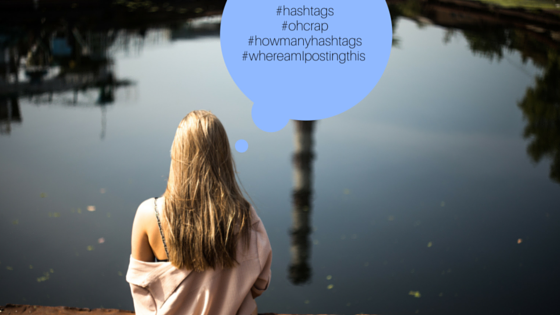So what’s this thing with hashtags?
Do I need it? Should I forget it?
Quite simply it’s a label that makes it easier for users to find messages with a specific theme or content.
The hashtag instantly links your post alongside others on the same topic.
Originally starting with Twitter and now being used on all social media platforms, hashtags have the power to include your message along with any topic of conversation–right beside the most influential thought leaders.
It is also a great way to search for information on particular topics.
They are a great way of tracking particular discussions based on keywords or topics. Think of it as a new search engine, as you would enter your keyword into google (or Yahoo or Bing) you are provided with pages of references so to with a hashtag search. You can research – or follow – a relative conversation on the social media platform of your choice. By searching particular keywords that are applicable to your business you will notice many other related or totally unrelated businesses using these same hashtags – and is worth considering watching or following them and growing your own audience.
A fitting tag can help drive brand recognition.
However simply using a hashtag for the sake of it is not acceptable and will actually damage the brand. It is essential that the hashtag is adding to the conversation. Tour tag can boost the reach of an advertising campaign and positively impact customer loyalty. Keep in mind though that using an obscure hashtag will only be successful if you have grown the brand/tag that others will recognise and use.
The number of hashtags on each platform varies.
Ongoing research debates on the particular number of hashtags that result in a successful post and each platform is different in both the quantity and quality. Facebook has seen that two hashtags are great and only at the conclusion of a status update. Whereas Twitter sees maximum retweets with two to three hashtags and they are used as in conversation. The use of hashtags on Instagram is more noticeable with greatest engagement seen when using seven hashtags with #nofilter being one of the most common. LinkedIn has been the slowest to adopt hashtags but is now seeing them being used to describe topic discussions rather than specific keywords. Google+ use of hashtags has become important with the platform using them on your posts – even if you don’t and between three and five tags seem to work best. YouTube has also incorporated the inclusion of tags and finds that two to three tags are sufficient.
So shouldn’t you be using hashtags to broaden and increase your business reach?!?


Recent Comments